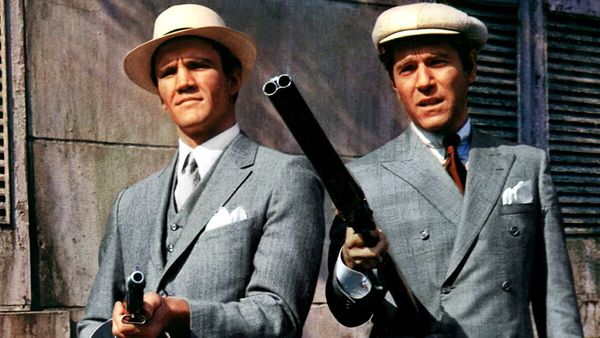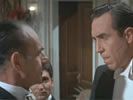Eye For Film >> Movies >> The St Valentine's Day Massacre (1967) Film Review
The St Valentine's Day Massacre
Reviewed by: Adam Micklethwaite

Roger Corman’s 1967 tale of prohibition-era gangland slaughter recounts the sequence of events leading up to and including the brutal, cold-blooded killings of seven members of Chicago’s North Side Gang in the infamous St Valentine’s Day massacre of 1929, which was itself the culmination of the turf war between the rival gangs led by Al Capone and Bugs Moran.
This is one of Corman’s few films to have been made with the backing of a major Hollywood studio and a generous budget – an experience which apparently left him disgusted with the incredible waste of time and money involved in "typical" movie production techniques. Nevertheless, the result is a subversive and intelligent gangster flick which highlights the theatricality of gangland mythmaking, beneath the guise of documentary precision and factual accuracy.

The film is particularly famous for its mischievous, unpredictable voiceover, courtesy of Paul Frees doing his best Orson Welles impression. Each character is given an introduction by the narrator, listing factual details about their life and culminating in the details of their future death. This voiceover reinforces the air of inevitability, of foreboding; the sensation that they are just actors whose role in the unfolding events has already been decided, the sensation that character is almost irrelevant, being as it is very much subordinate to the overarching plot whose dramatic ending we already know.
This narration is a stroke of genius from Corman, adding to the feigned aesthetic of factual accuracy and docu-drama, while at the same time creating an ironic detachment from the characters themselves, allowing the viewer a position of superiority which is reinforced by the mixture of plain factual details about the characters lives and playful speculation about their motivation.
The docu-drama feel and factual approach are somewhat undermined by occasional inexplicable lapses in historical accuracy, such as the film’s onscreen portrayal of the murder of Joe Aiello by Al Capone, whereas in truth Aiello was really killed more than 18 months later in a drive-by shooting. It’s hard to say whether this is a simple oversight on the part of the researchers, or a more subtle attempt by Corman to undermine the mythmaking of the prohibition-era gangsters.
Corman famously wanted Orson Welles for the part of Capone, but this was vetoed by Fox who considered Welles to be ‘undirectable’. It was instead Jason Robards who eventually landed the role and while he does a passable, albeit somewhat OTT, version of the temperamental, mercurial Capone, there is no doubt in my mind that Welles would’ve achieved a very different kind of gravitas in the role.
While we will never know what the film could have been with the added talents of Orson Welles on board, it is nevertheless an excellent example of Corman’s prodigious oeuvre and phenomenal versatility. Those who speak of Corman only in the same breath as Hammer Horror, Edgar Allan Poe and Vincent Price would do very well to seek this film out.
Reviewed on: 19 Aug 2009
















